Cover
Copyright
Credits
About the Author
About the Reviewers
www.PacktPub.com
Table of Contents
Preface
1: Fun with Filters
Planning the app
Creating a black-and-white pencil sketch
Implementing dodging and burning in OpenCV
Pencil sketch transformation
Generating a warming/cooling filter
Color manipulation via curve shifting
Implementing a curve filter by using lookup tables
Designing the warming/cooling effect
Cartoonizing an image
Using a bilateral filter for edge-aware smoothing
Detecting and emphasizing prominent edges
Combining colors and outlines to produce a cartoon
Putting it all together
Running the app
The GUI base class
The GUI constructor
Handling video streams
A basic GUI layout
A custom filter layout
Summary
2: Hand Gesture Recognition Using a Kinect Depth Sensor
Planning the app
Setting up the app
Accessing the Kinect 3D sensor
Running the app
The Kinect GUI
Tracking hand gestures in real time
Hand region segmentation
Finding the most prominent depth of the image center region
Applying morphological closing to smoothen the segmentation mask
Finding connected components in a segmentation mask
Hand shape analysis
Determining the contour of the segmented hand region
Finding the convex hull of a contour area
Finding the convexity defects of a convex hull
Hand gesture recognition
Distinguishing between different causes of convexity defects
Classifying hand gestures based on the number of extended fingers
Summary
3: Finding Objects via Feature Matching and Perspective Transforms
Tasks performed by the app
Planning the app
Setting up the app
Running the app
The FeatureMatching GUI
The process flow
Feature extraction
Feature detection
Detecting features in an image with SURF
Feature matching
Matching features across images with FLANN
The ratio test for outlier removal
Visualizing feature matches
Homography estimation
Warping the image
Feature tracking
Early outlier detection and rejection
Seeing the algorithm in action
Summary
4: 3D Scene Reconstruction Using Structure from Motion
Planning the app
Camera calibration
The pinhole camera model
Estimating the intrinsic camera parameters
The camera calibration GUI
Initializing the algorithm
Collecting image and object points
Finding the camera matrix
Setting up the app
The main function routine
The SceneReconstruction3D class
Estimating the camera motion from a pair of images
Point matching using rich feature descriptors
Point matching using optic flow
Finding the camera matrices
Image rectification
Reconstructing the scene
3D point cloud visualization
Summary
5: Tracking Visually Salient Objects
Planning the app
Setting up the app
The main function routine
The Saliency class
The MultiObjectTracker class
Visual saliency
Fourier analysis
Natural scene statistics
Generating a Saliency map with the spectral residual approach
Detecting proto-objects in a scene
Mean-shift tracking
Automatically tracking all players on a soccer field
Extracting bounding boxes for proto-objects
Setting up the necessary bookkeeping for mean-shift tracking
Tracking objects with the mean-shift algorithm
Putting it all together
Summary
6: Learning to Recognize Traffic Signs
Planning the app
Supervised learning
The training procedure
The testing procedure
A classifier base class
The GTSRB dataset
Parsing the dataset
Feature extraction
Common preprocessing
Grayscale features
Color spaces
Speeded Up Robust Features
Histogram of Oriented Gradients
Support Vector Machine
Using SVMs for Multi-class classification
Training the SVM
Testing the SVM
Confusion matrix
Accuracy
Precision
Recall
Putting it all together
Summary
7: Learning to Recognize Emotion in Faces
Planning the app
Face detection
Haar-based cascade classifiers
Pre-trained cascade classifiers
Using a pre-trained cascade classifier
The FaceDetector class
Detecting faces in grayscale images
Preprocessing detected faces
Facial expression recognition
Assembling a training set
Running the screen capture
The GUI constructor
The GUI layout
Processing the current frame
Adding a training sample to the training set
Dumping the complete training set to file
Feature extraction
Preprocessing the dataset
Principal component analysis
Multi-layer perceptrons (MLPs)
The perceptron
Deep architectures
An MLP for facial expression recognition
Training the MLP
Testing the MLP
Running the script
Putting it all together
Summary
Index
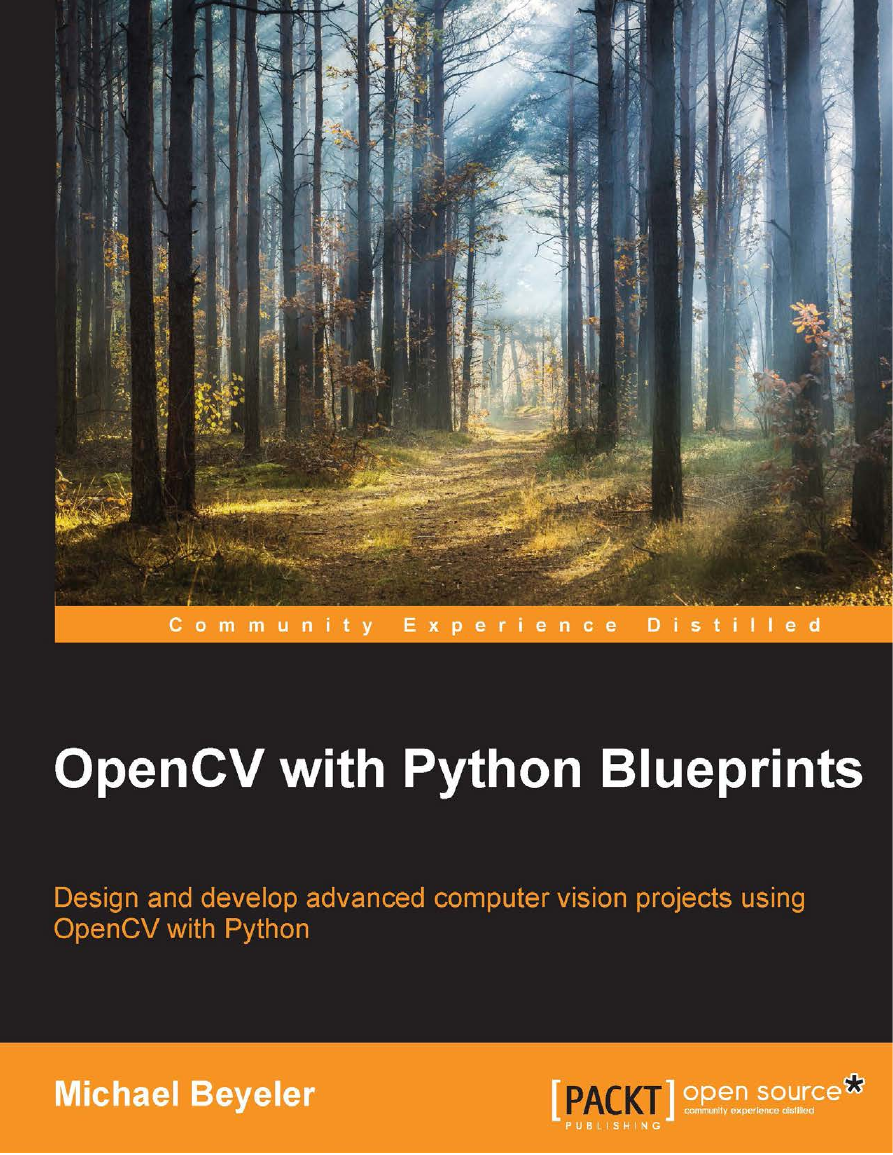
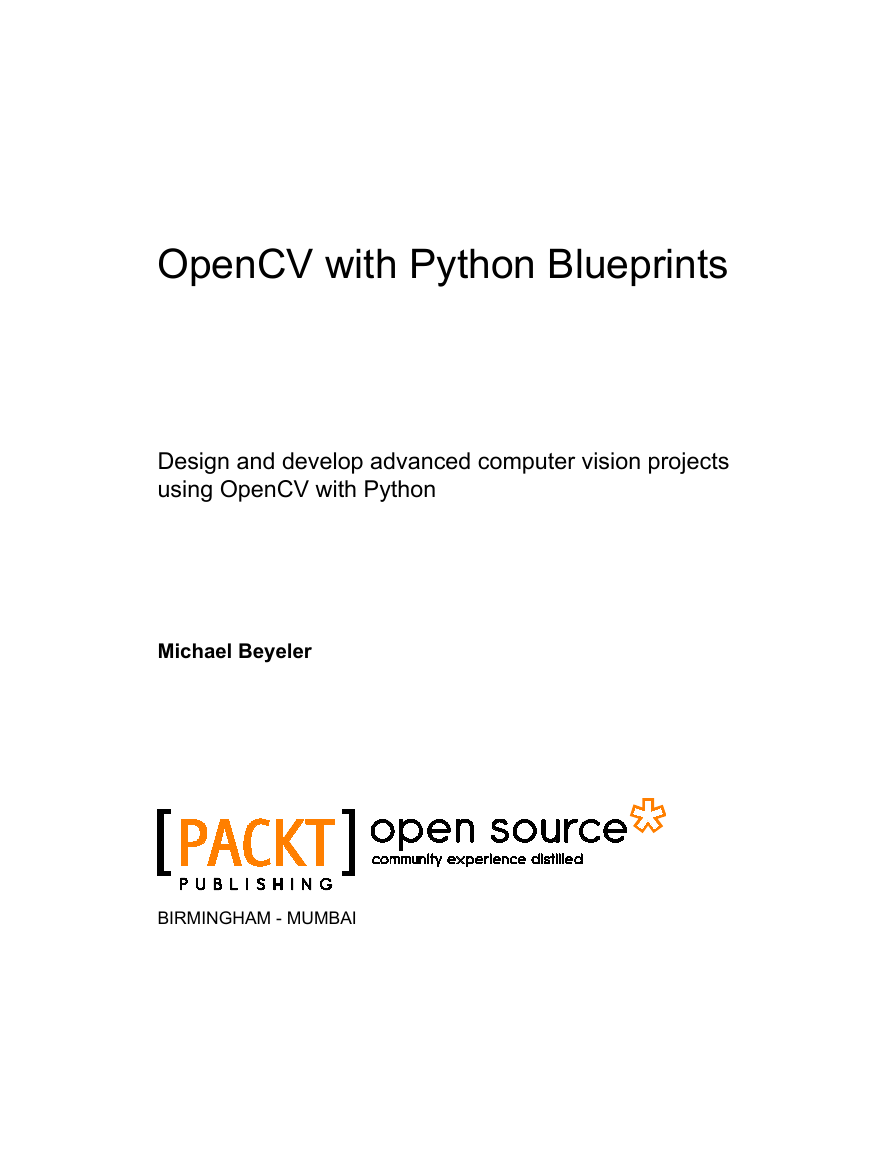

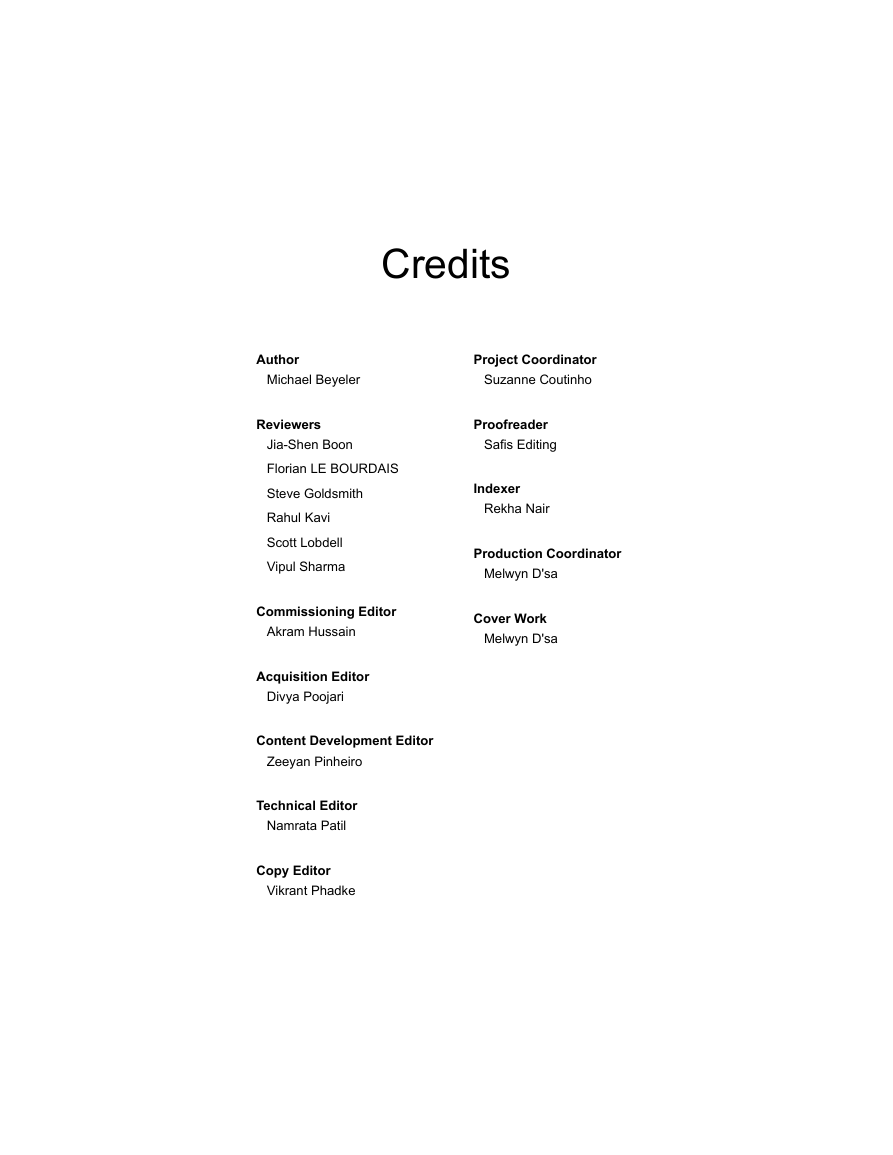

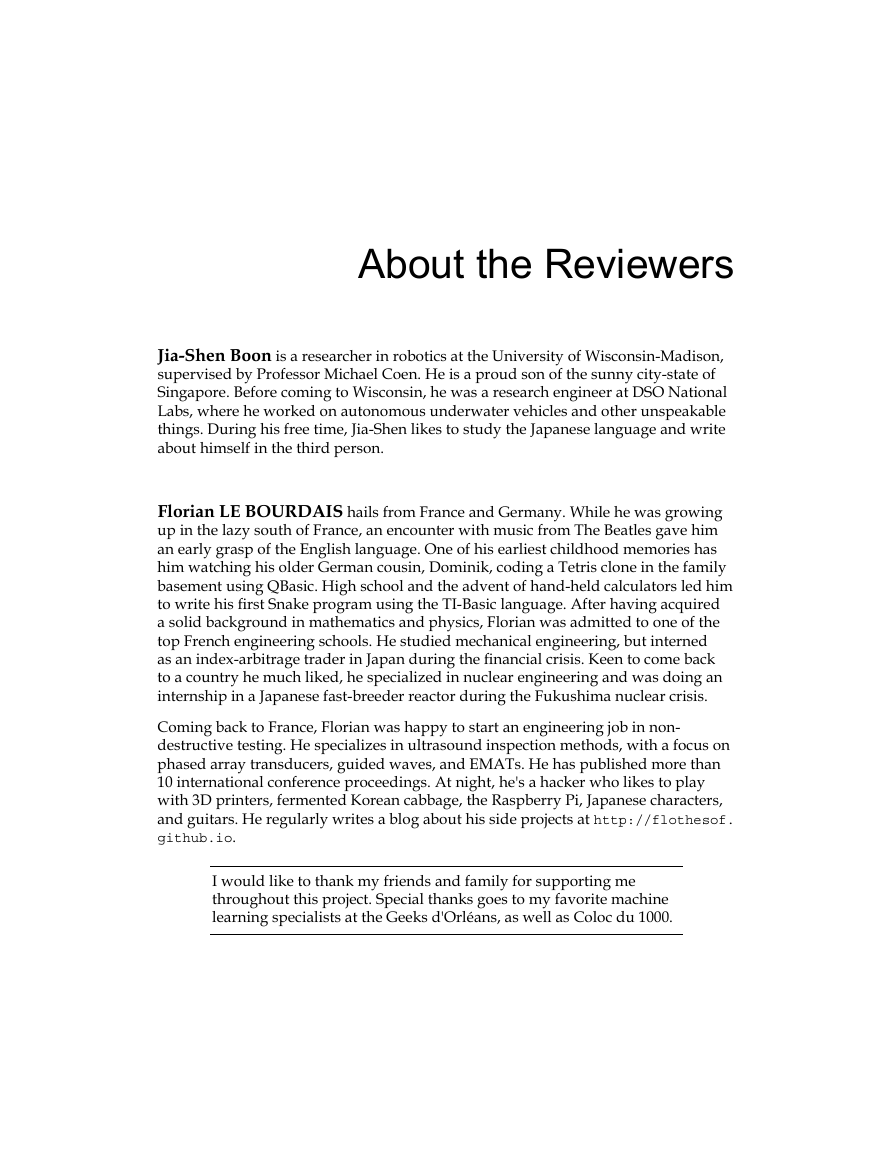
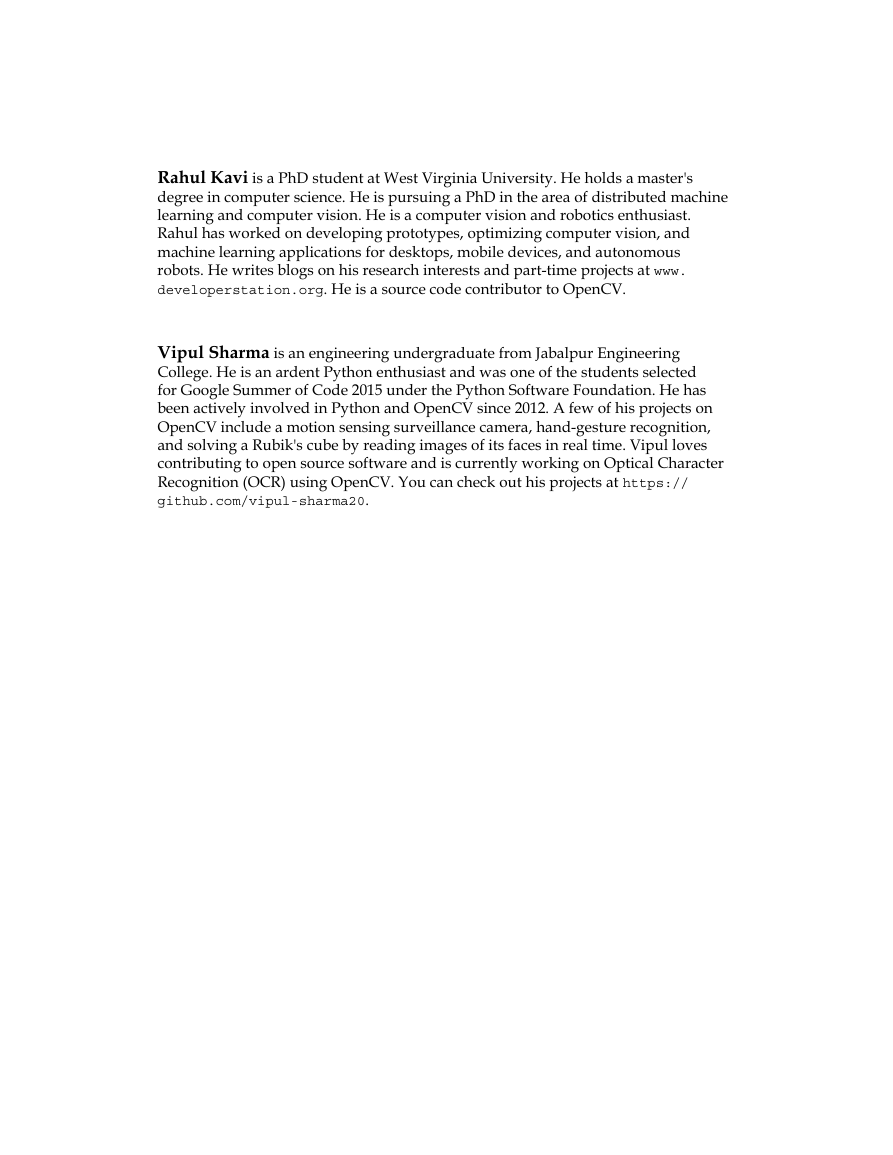









 2023年江西萍乡中考道德与法治真题及答案.doc
2023年江西萍乡中考道德与法治真题及答案.doc 2012年重庆南川中考生物真题及答案.doc
2012年重庆南川中考生物真题及答案.doc 2013年江西师范大学地理学综合及文艺理论基础考研真题.doc
2013年江西师范大学地理学综合及文艺理论基础考研真题.doc 2020年四川甘孜小升初语文真题及答案I卷.doc
2020年四川甘孜小升初语文真题及答案I卷.doc 2020年注册岩土工程师专业基础考试真题及答案.doc
2020年注册岩土工程师专业基础考试真题及答案.doc 2023-2024学年福建省厦门市九年级上学期数学月考试题及答案.doc
2023-2024学年福建省厦门市九年级上学期数学月考试题及答案.doc 2021-2022学年辽宁省沈阳市大东区九年级上学期语文期末试题及答案.doc
2021-2022学年辽宁省沈阳市大东区九年级上学期语文期末试题及答案.doc 2022-2023学年北京东城区初三第一学期物理期末试卷及答案.doc
2022-2023学年北京东城区初三第一学期物理期末试卷及答案.doc 2018上半年江西教师资格初中地理学科知识与教学能力真题及答案.doc
2018上半年江西教师资格初中地理学科知识与教学能力真题及答案.doc 2012年河北国家公务员申论考试真题及答案-省级.doc
2012年河北国家公务员申论考试真题及答案-省级.doc 2020-2021学年江苏省扬州市江都区邵樊片九年级上学期数学第一次质量检测试题及答案.doc
2020-2021学年江苏省扬州市江都区邵樊片九年级上学期数学第一次质量检测试题及答案.doc 2022下半年黑龙江教师资格证中学综合素质真题及答案.doc
2022下半年黑龙江教师资格证中学综合素质真题及答案.doc